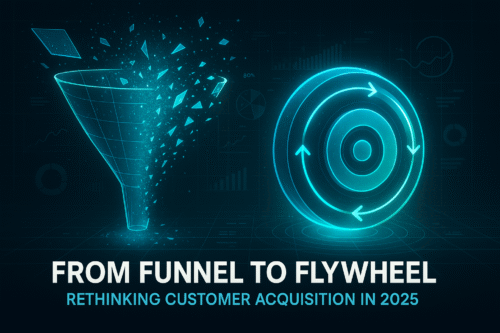Generating quality leads is the backbone of every successful business, and Facebook Ads has become one of the most effective tools for this purpose. With billions of active users, advanced targeting capabilities, and data-driven insights, Facebook offers unmatched opportunities for businesses to capture leads that convert into loyal customers. In this comprehensive guide, we will break down every step you need to master Facebook Ads for lead generation success.
Why Use Facebook Ads for Lead Generation?
Facebook Ads empower businesses to connect directly with their target audience by leveraging detailed user data. Unlike other advertising platforms, Facebook allows precise segmentation based on demographics, interests, behaviors, and location. With features like Lead Forms, Custom Audiences, and Lookalike Audiences, advertisers can quickly build a steady flow of qualified prospects.
Benefits of using Facebook Ads for lead generation include:
- Highly targeted audience reach
- Cost-effective advertising options
- Integration with CRM systems
- Customizable ad formats
- Instant lead capture through in-app forms
Step 1: Define Your Lead Generation Goals
Before running ads, businesses must clearly define what qualifies as a lead. Is it a newsletter signup, a demo request, or a free consultation booking? Setting a SMART goal (Specific, Measurable, Achievable, Relevant, and Time-bound) helps determine the right ad format, budget, and strategy.
For example:
- B2B SaaS Company – Generate 500 demo requests in one quarter
- E-commerce Store – Collect 2,000 email sign-ups before launching a new product
Local Business – Book 50 consultation appointments in 30 days
Step 2: Create a Facebook Business Manager Account
To run Facebook Ads, you must first set up Facebook Business Manager. This tool centralizes ad account management, pixel tracking, and team collaboration.
Steps:
- Visit business.facebook.com.
- Create an account with your business details.
- Add your Facebook Page, Ad Account, and Payment Method.
- Assign roles to your marketing team.
This setup ensures smoother campaign tracking and performance management.
Step 3: Install the Facebook Pixel
The Facebook Pixel is a must-have for effective lead generation. It tracks user behavior on your website and enables advanced targeting and retargeting strategies.
Steps to install:
- Go to Events Manager in Business Manager.
- Create a Facebook Pixel.
- Add the Pixel code to your website header.
- Use tools like Google Tag Manager or plugins (for WordPress/Shopify).
- Verify installation with the Pixel Helper Chrome Extension.
With the Pixel, you can measure conversions, optimize ad delivery, and build custom audiences from website visitors.
Step 4: Choose the Right Campaign Objective
When creating your ad campaign, Facebook will ask you to select an objective. For lead generation, the two most effective options are:
- Lead Generation Objective – Uses Facebook’s native Instant Forms to capture leads without leaving the platform.
- Conversions Objective – Directs users to your website’s landing page to complete a form, ideal if you want more control over the lead capture process.
Pro Tip: Use Lead Generation Objective for mobile-friendly, quick form fills and Conversions Objective for high-intent leads.
Step 5: Build Highly Targeted Audiences
One of Facebook’s strongest features is its audience targeting. To maximize your ad spend, you must target users most likely to convert.
Audience Types:
- Core Audiences – Filter by demographics, interests, location, and behavior.
- Custom Audiences – Retarget users who have interacted with your website, app, or previous ads.
- Lookalike Audiences – Reach new people who share traits with your best existing customers.
Example: A fitness studio can target local users interested in health, fitness apps, and nutrition brands, while also retargeting visitors who viewed the membership page.
Step 6: Design High-Converting Lead Ads
Your ad creative plays a significant role in capturing attention and driving clicks.
Elements of a high-performing Facebook lead ad:
- Compelling Headline – Clearly communicates value.
- Eye-Catching Visuals – Use bold colors, people-focused imagery, or short video clips.
- Persuasive Copy – Highlight benefits, not just features.
- Strong CTA (Call-to-Action) – Examples: “Sign Up Today,” “Get Your Free Guide,” “Book a Demo.”
Example:
Instead of “Subscribe to Our Newsletter,” try “Get Exclusive Tips to Double Your Sales – Free!”
Step 7: Optimize Your Lead Forms
If you use Facebook Instant Forms, optimization is key.
Tips for better conversion:
- Keep forms short – ask only essential questions.
- Use multiple-choice answers for ease.
- Personalize form questions to your industry.
- Add a strong privacy disclaimer for trust.
Customize the thank-you screen with next steps (like visiting your website or booking an appointment).
Step 8: Set a Budget and Bid Strategy
Facebook Ads can be run on virtually any budget, but efficient allocation ensures maximum ROI.
Key considerations:
- Daily vs. Lifetime Budget – Daily is consistent; Lifetime allows flexible spending.
- Bid Strategies – Use Lowest Cost for affordable leads or Cost Cap to control acquisition cost.
- Start with small test budgets ($20-$50/day) and scale once you identify winning ads.
Step 9: Test, Track, and Optimize
Continuous testing separates successful campaigns from wasted ad spend.
Metrics to track:
- CPL (Cost Per Lead) – Are leads affordable?
- CTR (Click-Through Rate) – Is the ad creative engaging?
- Conversion Rate – Are leads completing the form?
- Lead Quality – Are these leads sales-ready?
Optimization strategies:
- A/B test headlines, images, and CTA buttons.
- Exclude low-quality audiences.
- Retarget abandoned leads with reminder ads.
Scale high-performing campaigns.
Step 10: Integrate Leads with CRM and Email Marketing
Collecting leads is just the beginning. The true power of Facebook Ads lies in nurturing leads into customers.
- Sync leads automatically to CRMs like HubSpot, Salesforce, or Zoho.
- Send automated welcome emails within 24 hours.
- Segment leads based on interests for personalized follow-ups.
- Use retargeting ads to keep leads engaged until conversion.
Best Practices for Long-Term Success
- Always refresh ad creatives every 2–4 weeks to avoid ad fatigue.
- Use video ads for higher engagement.
- Leverage retargeting ads to re-engage warm prospects.
- Prioritize lead quality over volume.
Continuously monitor audience overlap to avoid wasting budget.
Final Thoughts
Facebook Ads are one of the most powerful tools for consistent lead generation. By combining precise targeting, engaging creatives, and data-driven optimization, businesses can achieve sustainable growth and high-quality customer acquisition.
Follow Us | Our Services | Contact Us | Linkedin | Instagram







